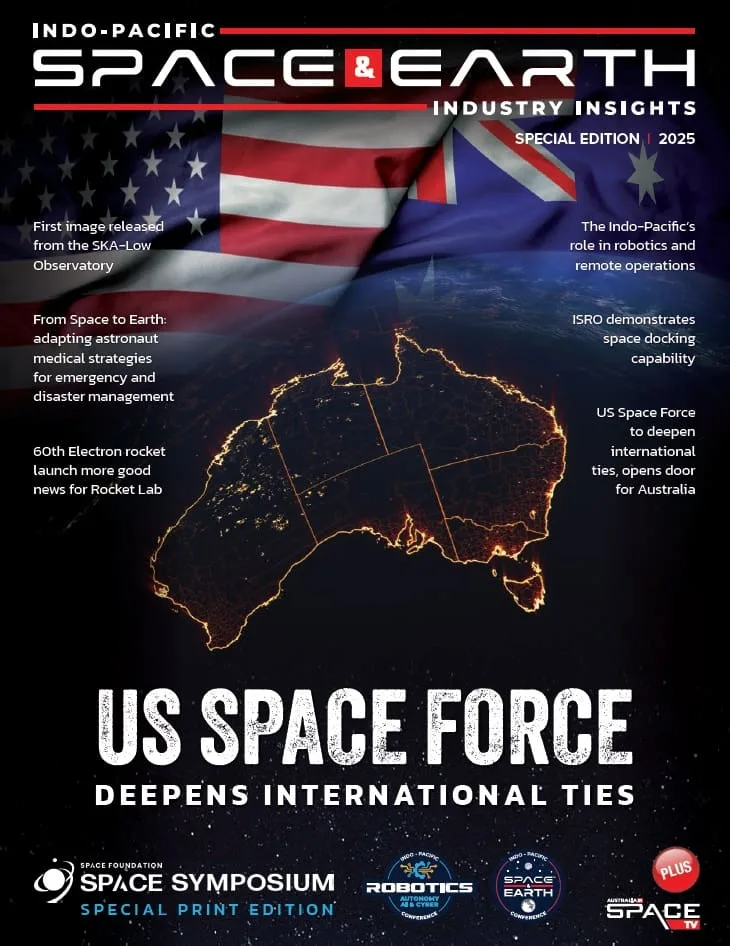Welcome to this special edition for the 40th Space Symposium, Colorado Springs, USA and announcing our inaugural Indo-Pacific Robotics, Autonomy, AI and Cyber (IPRAAC) Conference and Exhibition, an official adjacent event to the International Astronautical Congress, Sydney 2025.
This edition recognises our National Sponsors, Curtin University, Fugro SpAARC and our strategic partnerships with the International Astronautical Federation, SIA – India, Space Faculty, International Optical Technologies Association and the Andy Thomas Space Foundation.
To propel the Indo-Pacific region’s robotics and remote operations capabilities to orbital heights, writes Dharshun Sridharan, there is an opportunity to leverage Australia’s unique strengths – its harsh environments, vast distances, and now its space infrastructure. The next generation of rovers, drones, and autonomous systems that will explore the Moon, Mars and beyond could very well be a joint Indo-Pacific effort, assembled from many sources but proven on Australian soil.
This edition highlights the Indo-Pacific as a unique region for the global space industry. With successful moon missions from India, China and a world leading number of launch missions from New Zealand, there is aspiring space activities from Japan, Korea, Australia and regionally with Southeast Asia. Singapore recently doubled down to be a regional industry hub, announcing an additional USD45 million over two years and signing letters of intent with the European Space Agency (ESA) and launching an Earth Observation Initiative.
ESA and the Japanese Aerospace Exploration Agency (JAXA) have extended their cooperation to 2027 on using synthetic aperture radar (SAR) satellites in Earth science and applications. This reflects the extension of the operational life of the ALOS-2 mission, and the agencies signed a new ten-year framework agreement for a strategic partnership to develop cooperative activities in Earth observation that contribute to climate action.
Japan’s Ministry of Defense has awarded space servicing company Astroscale Japan a USD48 million contract to develop a responsive space system demonstration satellite prototype. The project, running to March 2028, includes the development and testing of a proto-flight model for a small geostationary demonstration satellite. A future on-orbit demonstration aims to improve autonomous and agile satellite operations and space environment monitoring capabilities while bolstering space operations.
Korea’s Aerospace Administration (KASA) has established a Mars task force in response to the election of US President Donald Trump and the influence of Elon Musk. John Lee, the head of Korea’s state space agency, thinks exploration of Mars will supersede exploration of the Moon as a priority during Trump’s term in the White House and that there is an opportunity for Korea to leap-frog other nation’s space sectors.
Aside from building space ties with the US, Lee has said Korea was on track to have its own reusable space launch vehicle by 2032 and plans to conduct up to six next generation launch vehicle missions by 2035, spending around USD1.38 billion in development.


